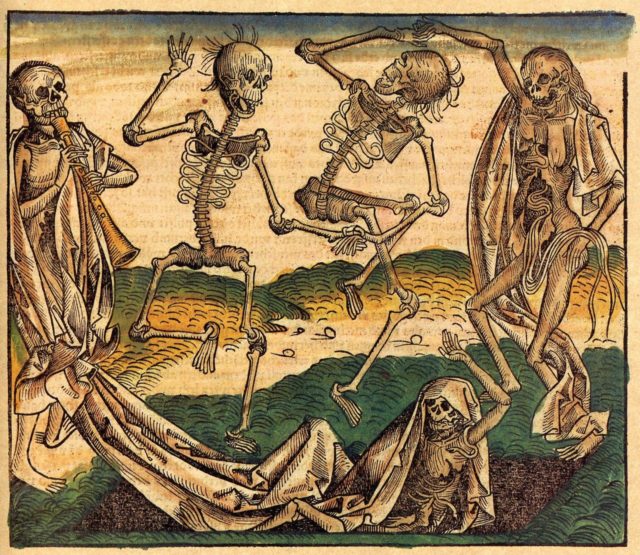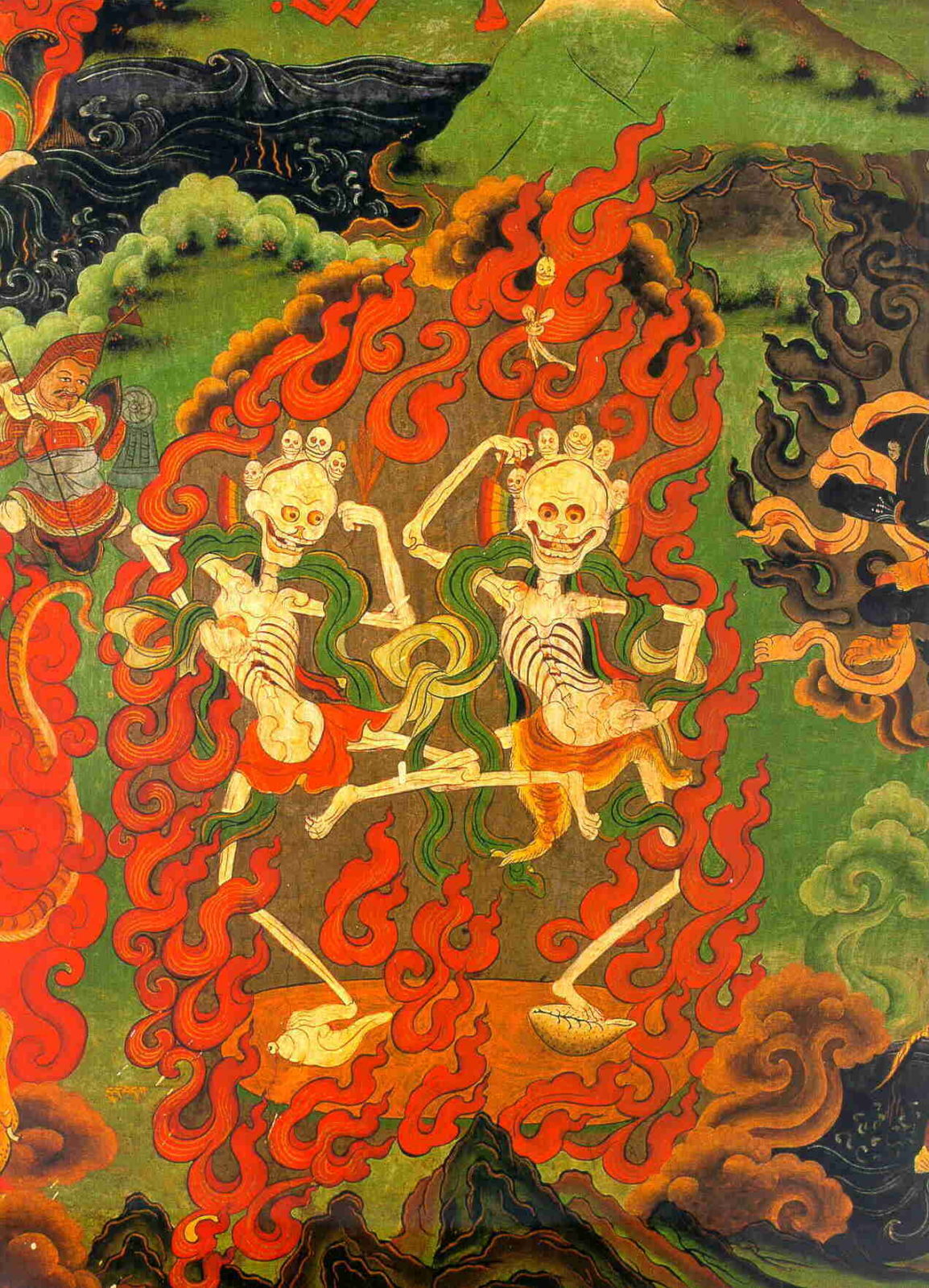Citipati is the name of a Tibetan Buddhist deity formed by two skeletons, male and female, with their legs interlocked, and standing on a conch shell and a cowrie shell, respectively.
Citipati guards the graveyards and protects from thieves. The dance of death, or dancing skeletons is depicted in other traditions that embrace death as a part of life.
Citipati is a particularly potent image with the union of male and female in an ecstatic dance. The alchemy of sexuality brings about a death and rebirth, psychologically and spiritually.
The sexual encounter should leave both participants transformed, leaving behind the ego for a union that is greater than the sum of the two individuals. Love and death are never far apart.
“The Citipati were a couple of ascetics meditating near a graveyard. In their deep state of meditation, they did not notice a thief who had sneaked up on them. The thief beheaded them and threw them into the dirt, which caused them to reach the next stage of ascetic practices. Infuriated by the act, the Citipati swore vengeance to the thief and became the archenemy of thieves and other criminals.
The Citipati cannot leave cemeteries and can only grab thieves passing through them. While waiting for criminals, the Citipati pass their time by dancing and blowing horns, a ritual reenacted by Tibetan monks twice annually.
Their dancing also serves as a symbol for death and rebirth, for the Citipati consist of both halves of the human body, male and female. Their skeletal form is a reminder of the impermanence of life and eternal change.” [source]
“In Vajrayana Buddhism they are known as the ‘Lords of the charnel grounds, brother and sister consorts’ (dur khrod bdag po lcam dral ), and in Sanskrit as Smashana-adhipati, meaning the ‘Primordial Lords of the charnel grounds’. As the twin protectors of cemeteries they subjugate all the vicious and malevolent demons, ghosts and spirits that can spiritually hinder practitioners, through the power of their tantric activities of pacifying, enriching, subjugating, slaying, exorcising, paralyzing, bewildering, and causing enmity.” [source]

The Dance of Death (1493) by Michael Wolgemut

